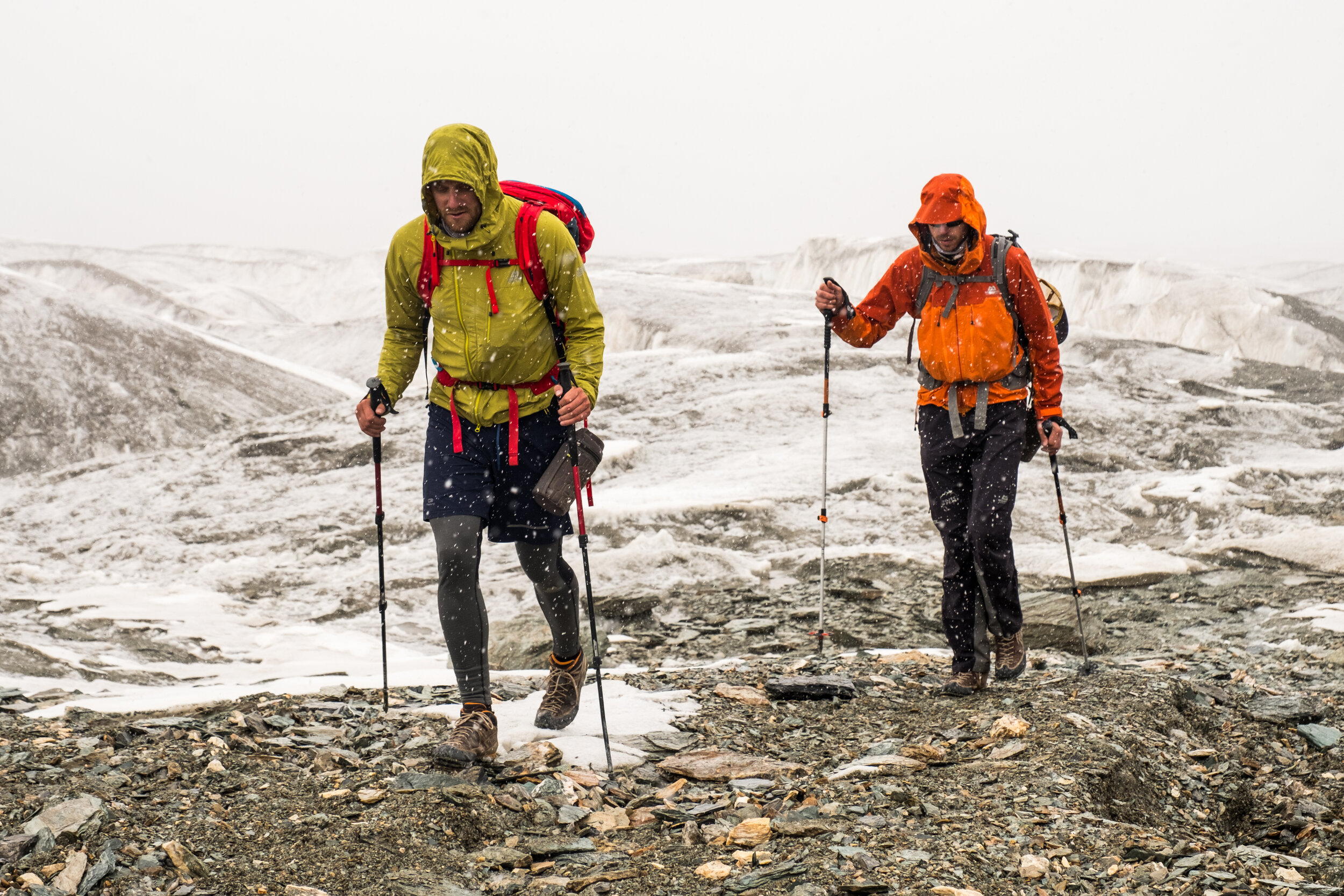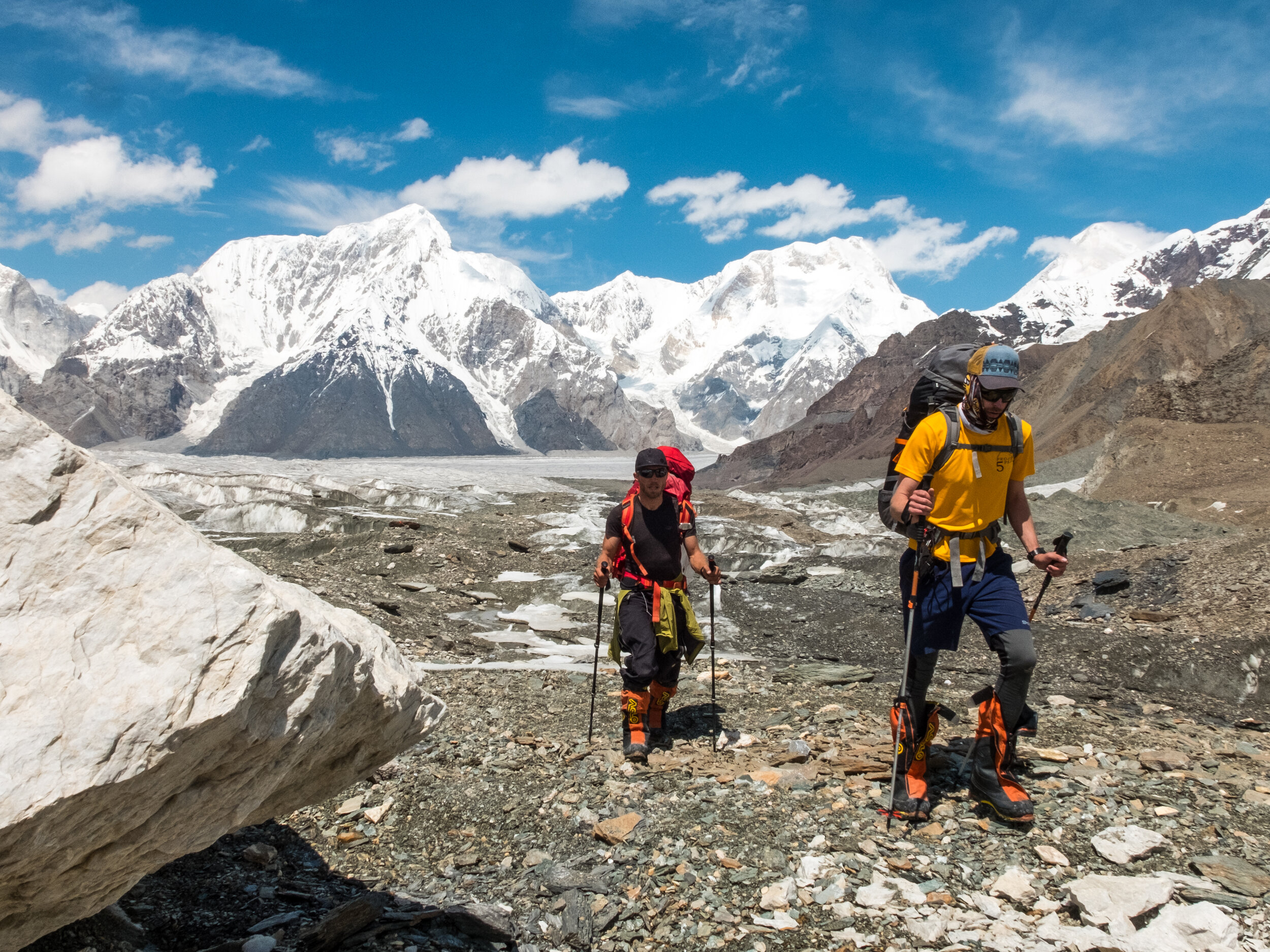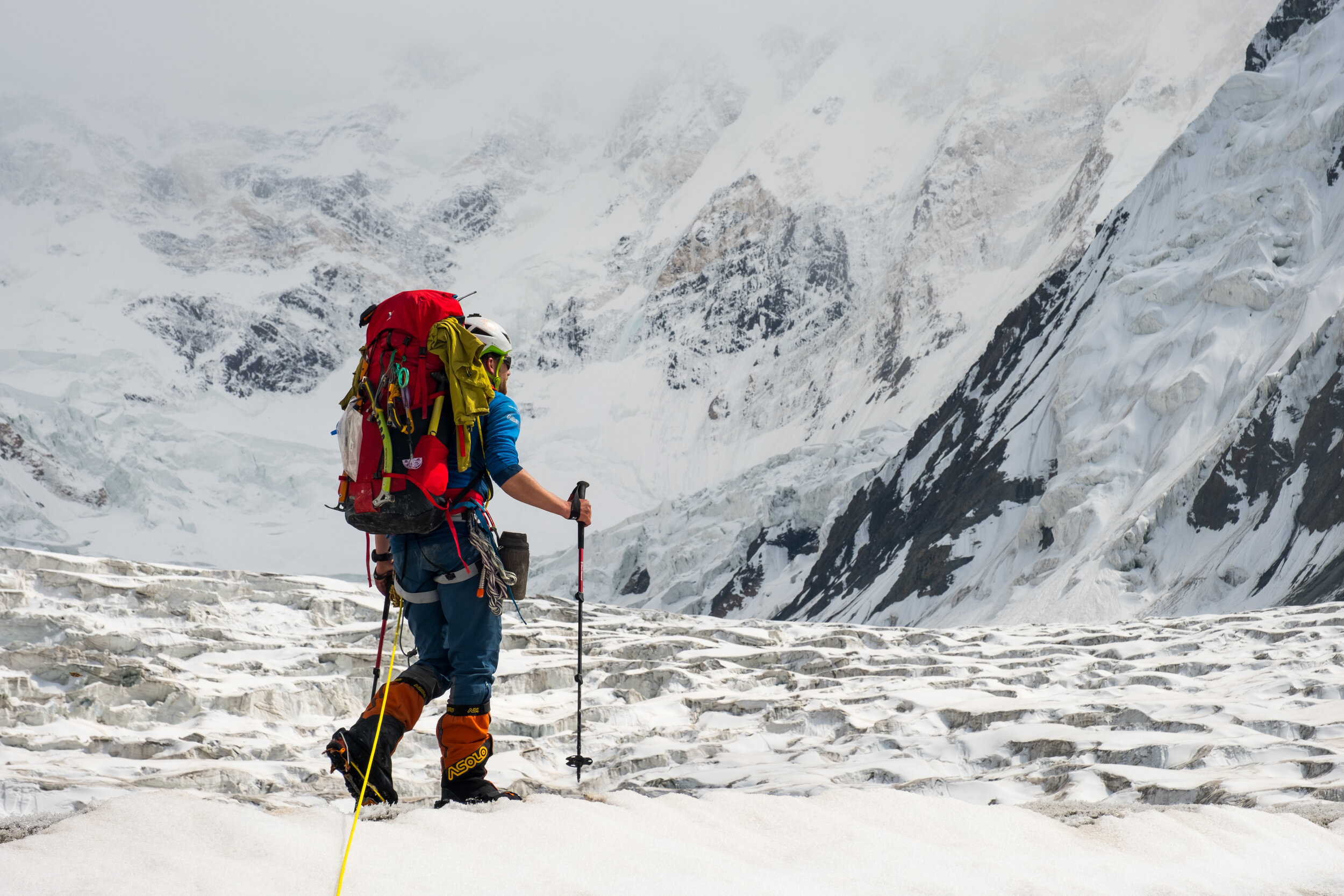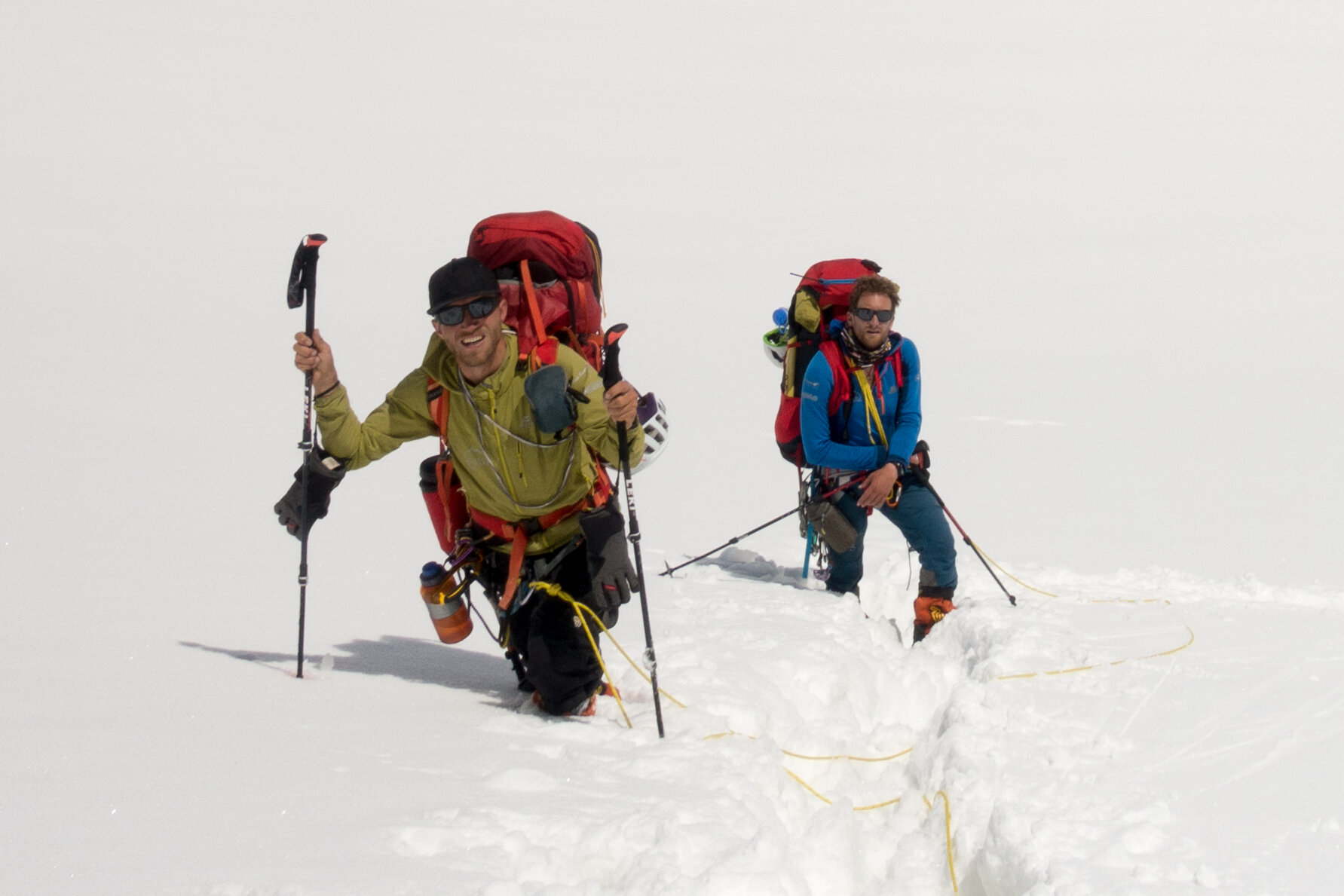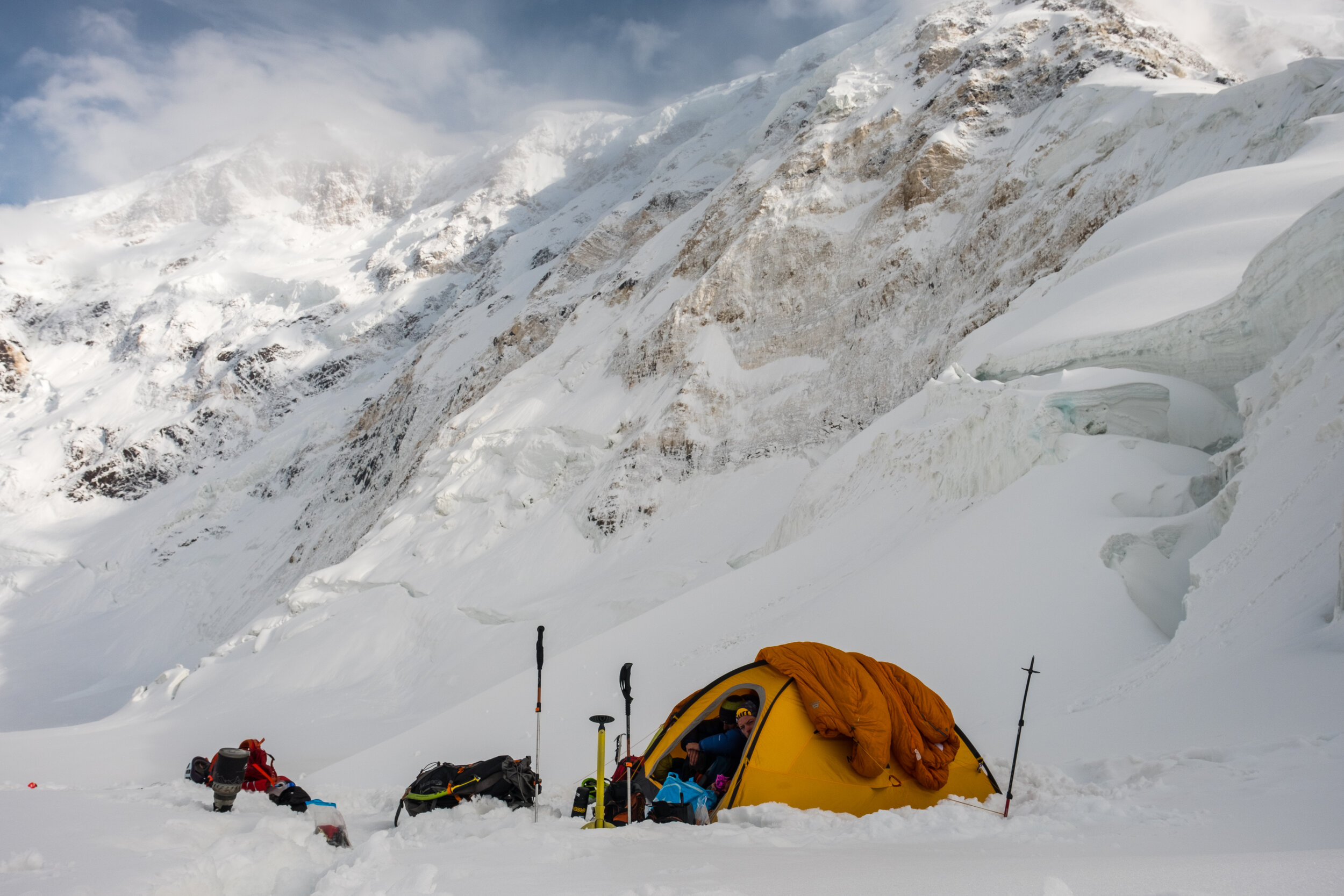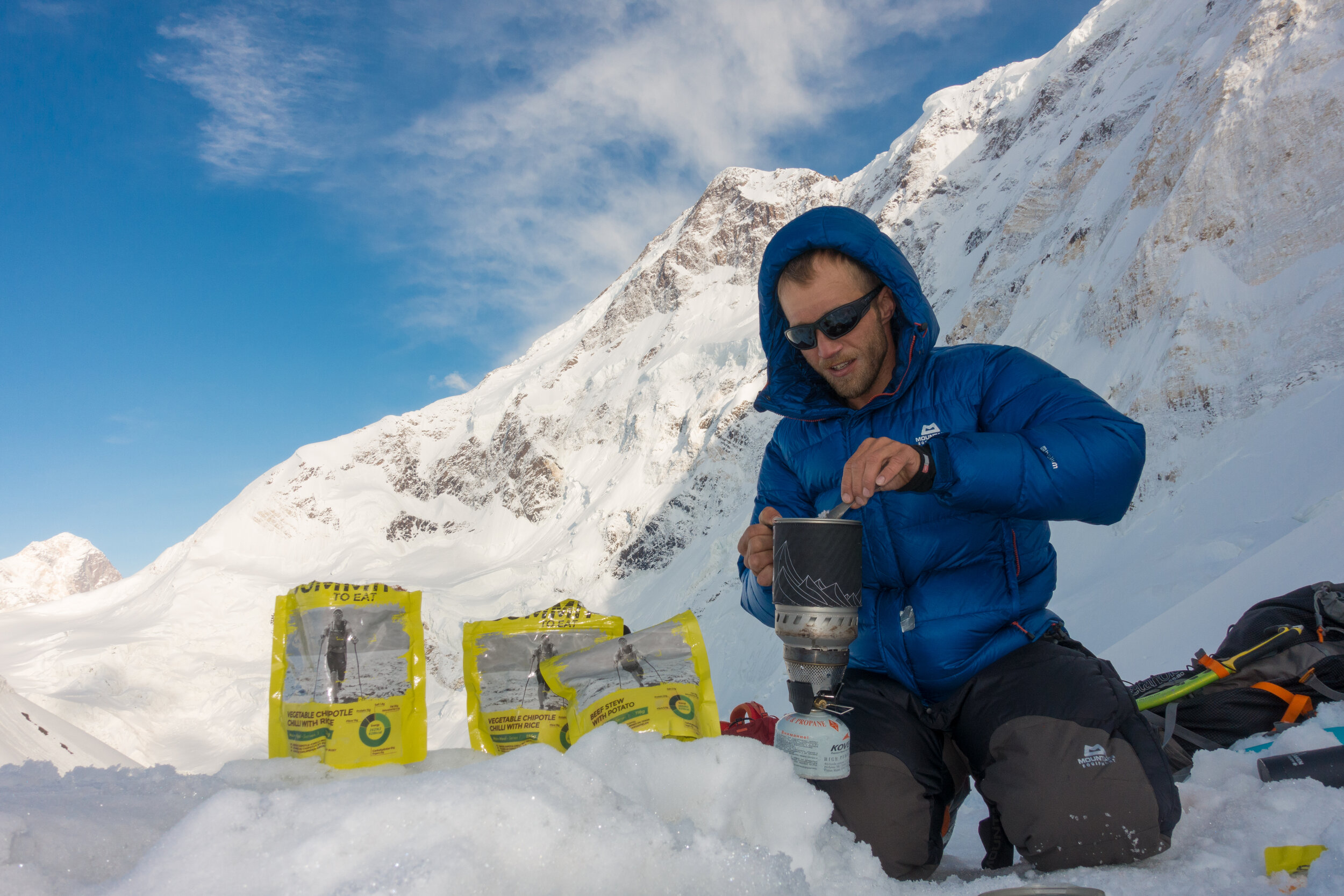Pobeda Part I - ‘a different ballgame’
Tekst by Gijs Schuurhuis
Photos by Martin Vorel
It’s been a while since we returned from our Pobeda expedition. I guess we needed some time to acclimatize back home, but let’s pick it up where we left!
So, we completed our first acclimatization on Khan Tengri (check our previous blog), conditions were tough (to say the least). After a day of resting in basecamp the ‘weather game’ started. Checking the Mountain forecast and Meteo blue websites twice a day gave us a pretty good idea of what was going on. It seemed that there were two weather systems fighting over the Khan Tengri – Pobeda area. A low-pressure system, which we got pretty familiar with on Khan Tengri, meaning much snow and heavy winds. And, a high-pressure system, which (unfortunately) we got acquainted with during our stay(s) in basecamp…there’s nothing more frustrating than having clear blue skies and no winds while being in basecamp. But if I’ve learned one thing during this expedition: you can’t control the weather.
I always say that there are no easy peaks above 6.500m. In my experience at this altitude your body can no longer adapt / acclimatize and you need a healthy amount of character to get to the top. Pobeda however is a totally different ballgame than each of these other peaks we climbed so far. On Lenin and Khan Tengri you’re just a ‘visitor’ when going up and above 7.000m. On Pobeda there is not really another choice than spending a minimum of three days (and most probably four) high upon the ridge (which is around 7.000m).
We figured that getting to 5.800m on Khan Tengri wasn’t enough acclimatization for a summit attempt on Pobeda and so we started looking for a good window to get one more rotation in. The plan was to get to C3 at 6.400m, sleep there and climb to West-Pobeda (6.900m). We would then go back to BC and wait for a good window. With still about three weeks to go, we figured we had time.
After three resting days we saw a good window and started packing. That same day we opted to take our heaviest equipment to the start of the glacier, return for a good night sleep and get up early the next day. It’s about a 2,5 hour hike from basecamp to the end of the moraine and that’s where the infamous Pobeda glacier begins. This glacier is best to be described as an ice dune landscape, scattered with big crevasses and constantly on the move. As the clouds rolled in we dropped our gear and while it started it raining we made our way back to the tents. We were all thinking it without saying it out loud, rain on this altitude must mean snow – and a lot of it – higher up.
The next day we got to the drop-off location and repacked our bags. The bags where heavy, about 22kg each, loaded with enough food to last us for about seven to eight days. We roped up and stepped onto the glacier. We made good progress and I was surprised, two years ago it took as almost eight hours to get from basecamp to ABC. Now the glacier seemed much easier, less fresh snow, more ice and easier to navigate. We were moving fast and about five hours after leaving basecamp we once again stood below the mighty north face of Peak Pobeda. While setting up camp in the afternoon it didn’t take long before we heard the first avalanches. First some rock on a nearby subsidiary peak and after that some massive seracs where coming down on the main face. I took me back to 2017 when we felt so intimidated by this wall and its force. This time was different, I felt respect but there was less fear.
After a good sleep we got up early, packed our bags and made our way towards the icefall. I can’t say if it’s the most difficult part of the climb, but it is most certainly one of the most intimidating places I’ve ever been. From ABC you take a heavily crevassed glacier towards the right and make your way up ice and scree. There is not much snow, except for the avalanche debris. 2/3 of the way has pretty good coverage from potential ice avalanches, until you get to a big snowfield. This is where in 2017 we looked each other in the eyes and turned around. This time we didn’t stop, we knew a Russian team had left a few fixed ropes and in the first light we crossed the snowfield. We passed the first big serac on the left, climbed up a steep snowfield covered in debris and headed to the second couloir.
Allert took the lead in climbing the serac, which consisted out of two 50 meter pitches with fixed ropes, in places getting to a maximum of about 70 degrees ice. Even though climbing this with heavy packs isn’t easy, it’s not really about the difficulty. By this time it had started snowing , which made for an ominous ambiance. There’s an arena of seracs, towering high above you. We all felt their presence and climbed up as quickly as we could. I don’t even know how much time it took us in the end, but it can’t be more than an hour. Getting to the top of the second fixed rope I was hoping that this was it, but it wasn’t.
We found ourselves on a small plateau, just below a 30 meter overhanging ice wall. What struck me was the big pile of frozen shit, so it seems that we weren’t the only ones feeling a bit anxious. In front of us there was a huge crevasse, about six meters wide with seracs on either side and a sketchy looking ice/snow bridge spanning to the other side. We clipped into the Russian rope and took our own rope out, figuring a bit of extra protection wouldn’t hurt. I took the lead and fortunately the bridge was more solid than it looked! We got over it and jumped over a last big crevasse and that was it, mainly snow (with crevasses) towards C1.
Three hours later we were totally wasted and still not there. Hours and hours of plowing through knee-deep snow (at best), the sun burning at our faces and overheating our bodies – my backpack cutting into my hips and shoulders. We met with a Spanish-Hungarian team of four making their way down, this meant we were the only ones going up. Their track helped us a bit, but the snow was soft and the going was though. We thought about setting up camp halfway, but in the end pushed on to C1 (+/- 5.200m).


